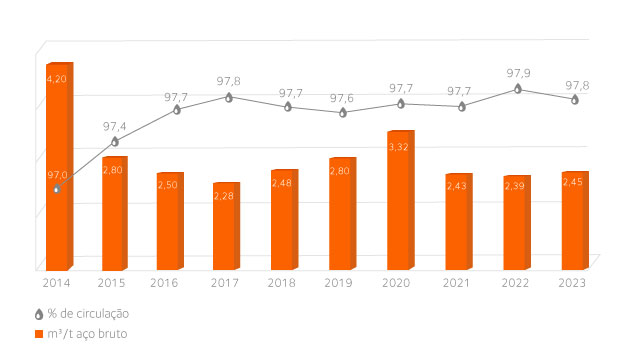Taking advantage of its location on the coast, about 95.6% of the water used by the unit came from the sea, circulates in the equipment's cooling system – with no direct contact with the equipments, and returns to the sea, passing through a long-distance channel to reduce its temperature.
Due to this system, only 4.4% of fresh water is consumed, which of all the fresh water used, 97.7% of it is recirculated and/or reused internally. Of that volume, 4% comes from the supply of the local provider and, with continuous investments, it has been reduced each year. The Water Master Plan has defined 1,750 m³/h as the internal goal of fresh water consumption from the state supply, Santa Maria da Vitória river, value bellow the contract signed, with the average annual result being only 1,7% above the established goal (1,779.3m³/h). Future goals include actions to reach 1,300 m³/h until 2024 by using alternative water sources and contributing to the water availability from Santa Maria River to the society. Among the alternative sources, as a result, is been implemented at the unit the seawater desalination plant, a bold and innovative project, pioneering in Brazil and first in the group, with a production capacity of 500m³/h of water for industrial use, with a expected start-up to 2021. In 2019, this project won the “Innovative Project” award during the IDA Congress – International Desalination Association, the world's leading event for desalination and advanced treatment in the world, held in Dubai, United Arab Emirates United.
Among these actions, the following stand out: conservation of water resources, through the preservation of water springs in the community of Crubixá, in Santa Leopoldina (ES) through a technical cooperation agreement signed in 2018, and reuse and treatment of effluents studies in partnership with R&D Brazil.
In accordance with the Water Master Plan, future goals include actions to expand the use of alternative sources of water by 2024, thus reducing the need to abstract water from the public system.
Fresh Water Recirculation (%) x Specific Consumption (m3/tab)

